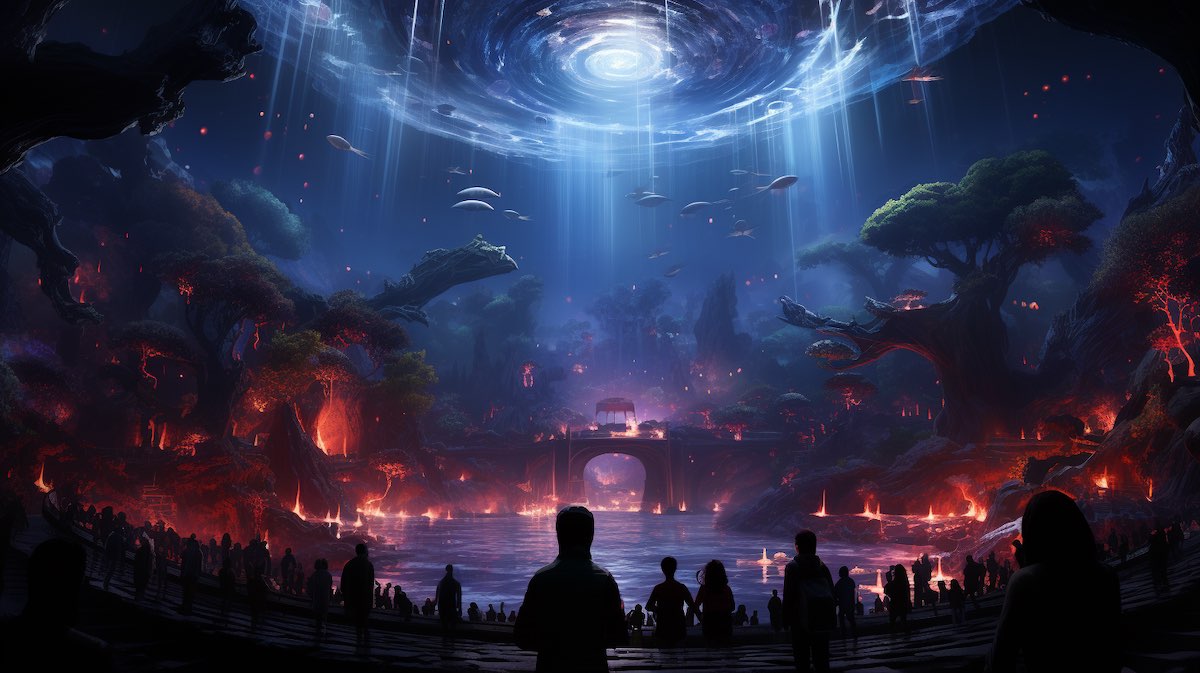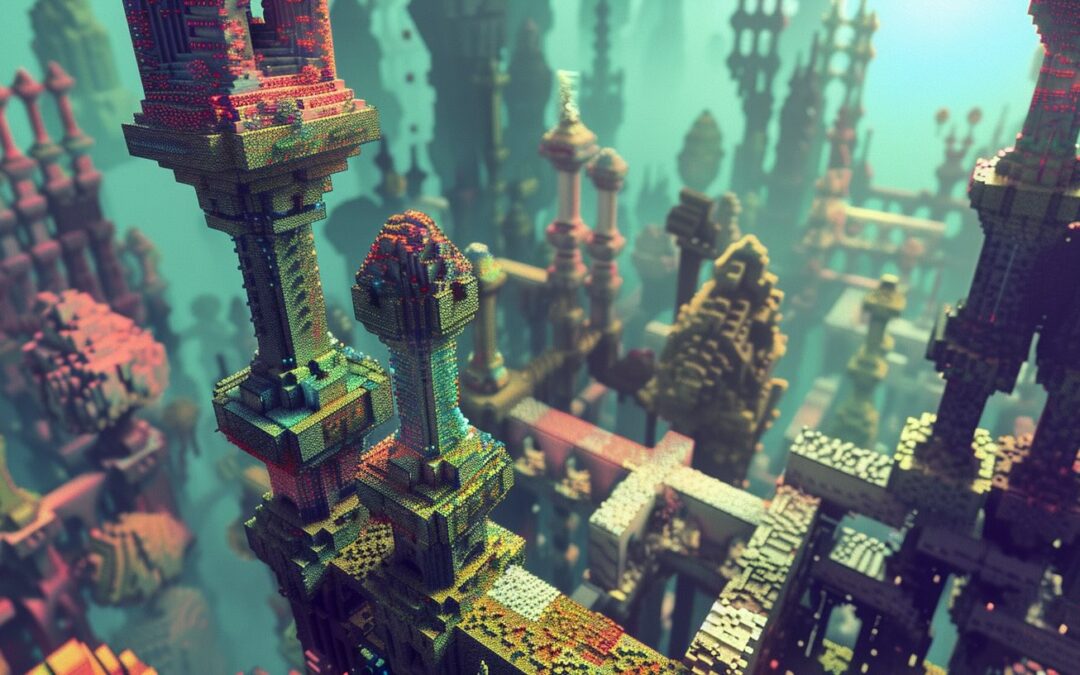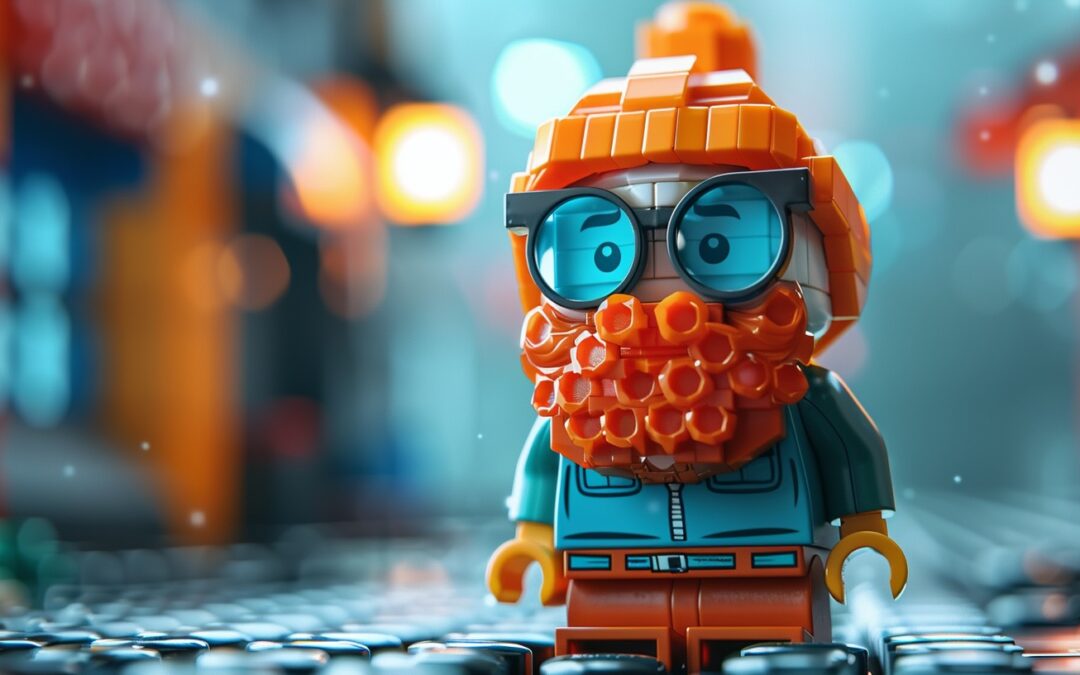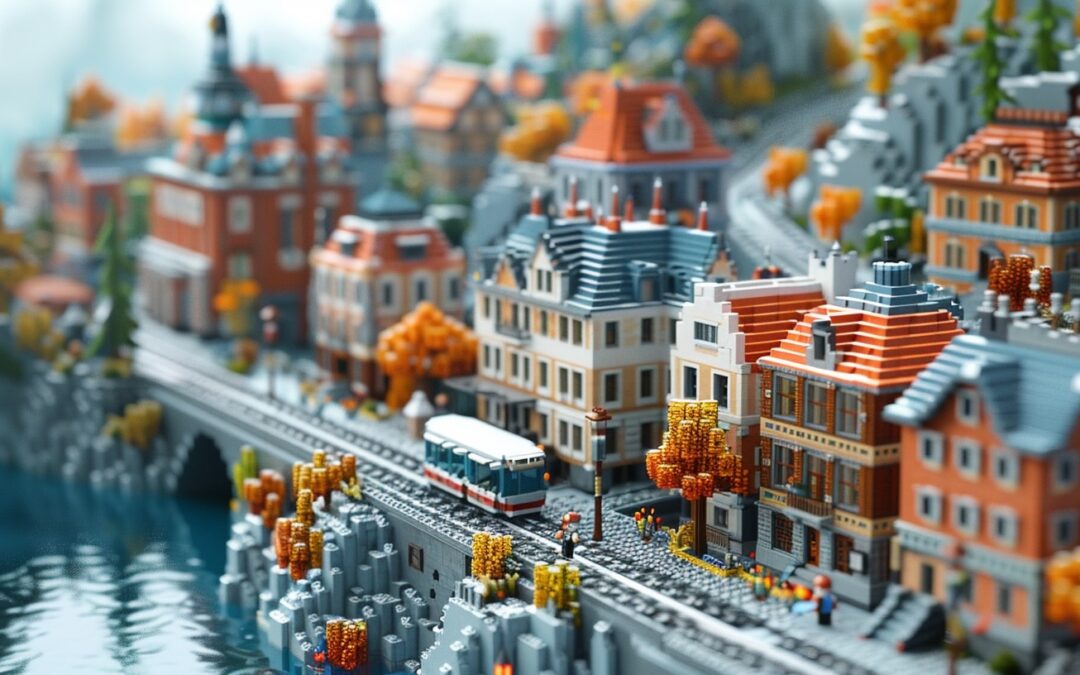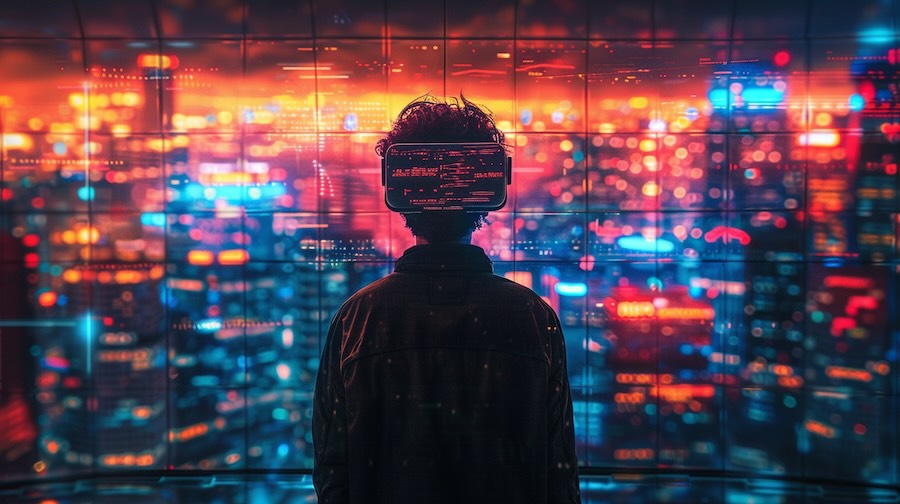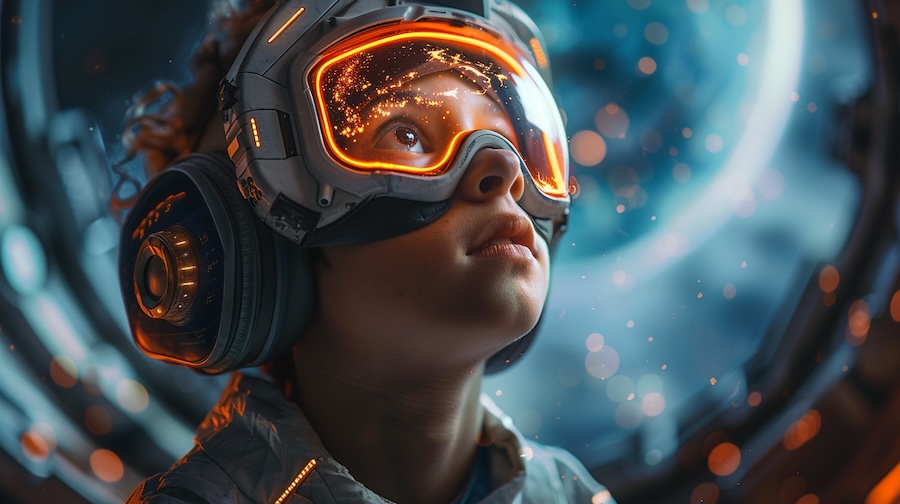We created this blog post for the EU-funded project “V2B: Creating NFT Opportunities on Metaverse for Art VET Trainees”; our project reference number is 2022-1-DE02-KA210-VET-000080828. Coordinated by L4Y Learning for Youth GmbH in collaboration with Adana Cukurova Guzel Sanatlar and EMC Services Ltd, this blog post “Metaverse Terminology: Exploring a New Digital Reality” is prepared related to the training framework in the introduction post.
Metaverse Terminology: Learning Outcomes
Understanding the Concept: Readers will gain a foundational understanding of the Metaverse, its origins, and its potential implications for various sectors.
Differentiation of Related Technologies: Readers will learn to differentiate between related concepts such as VR, AR, and Mixed Reality, understanding their unique characteristics and applications.
Insight into NFTs: Readers will get an introduction to NFTs, their significance in the digital realm, and their connection to the Metaverse.
Awareness of Key Players: By the end of the article, readers will be familiar with significant companies and platforms contributing to developing and popularising the Metaverse.
Grasp of Potential Impact: The article provides insights into how the Metaverse might impact various sectors, from education and business to health and art, allowing readers to ponder its broader societal implications.
In conclusion, the blog post does a commendable job of introducing the Metaverse to a general audience. With a few tweaks and clarifications, it can be an even more robust resource for those looking to dive into this exciting new frontier of digital existence.
What is Metaverse?
Metaverse has recently become one of the most popular topics. Those who want to be informed and participate in this rising field started detailed research. So what does the metaverse world, which has been highly researched recently, mean? Let’s take a look at it.
Metaverse is formed by combining the concepts of “meta” and “verse”. Meta means beyond something, and verse comes from the word universe, which means universe. The Metaverse is a digital universe encompassing 3D virtual worlds, 2D spaces, text-based forums, augmented reality, and other online environments and experiences. This digital universe has gained importance in a dimension that could not even be predicted in the past. In the metaverse universe, we can do everything in the real world, such as chatting with people, playing games, running, and exploring. The metaverse universe has reached a level where land is bought and sold, and companies make millions of investments. It sounds huge. Years ago, when we were joking that we would live in virtual worlds in the future, could we have guessed that things would reach this level?
If you have ever experienced films, series, or video games such as The Matrix, Pokemon Go, Minority Report, or Black Mirror, you have had the chance to see the tracks of the Metaverse universe. We will give more detailed examples when discussing VR, AR, and Mixed Reality terminologies.
With Metaverse, we can say that the virtual and real worlds are intertwined. For example, a virtual concert was given. And it was by Travis Scott. Travis Scott, who appeared as an avatar, gave a virtual show in Fortnite, and 28 million people watched this concert.
First Use of “Metaverse”
The metaverse concept was popularized in Neal Stephenson’s 1992 novel, “Snow Crash,” where it was envisioned that the Internet would evolve into a virtual reality-based realm. In this novel, individuals interacted in the online world through their avatars, a strikingly prescient notion. However, it’s worth noting that while “Snow Crash” played a significant role in bringing the term to the forefront, the idea of a digital universe had been explored in earlier works of science fiction.
More than 30 years have passed, and now big companies such as Meta, Roblox, Microsoft, and Epic Games are building their metaverse or multiverse.
Metaverse Terminology: Concepts Related To The Metaverse
Some concepts cannot be unmentioned in an article about the Metaverse. I will talk about these concepts in detail.
Virtual Reality (VR)
Almost everyone has heard of virtual reality helmets or headsets. So, what is virtual reality? Virtual reality is an artificially created environment where we feel part of it. In this environment, we perceive with virtual reality devices; we see or feel the objects around us. But I would like to remind you again that a computer creates this environment and is independent of the real world.
With virtual reality, we move into another world and act independently of our world. For example, we can run breathlessly in the middle of a desert or jump from a crazy waterfall. In other words, we are the main characters in the online game.
Virtual reality helmets are tools that carry us into the digital world. A person wearing this helmet breaks away from the real world and enters a digital world. The colours, sounds, vibrations, and movements he perceives in this world make him feel like he is really in that world. This can create different views for someone looking from the outside. You can look at the videos of people who experience VR glasses in funny situations.
The Usage Areas of Virtual Reality
The usage areas of virtual reality are mainly: Entertainment, Architecture-Construction, Education, Culture-Tourism.
We are using virtual reality in a lot of entertainment industries. For example, if you want a very realistic car racing experience, you can drive a rally in your driver’s seat in your virtual world. You can also experience a 360-degree video experience. For example, you can spacewalk like in this video. And you don’t need a spaceship to go into space! You can do extreme sports such as cliff jumping with virtual reality.
Virtual reality is used in the architecture and construction sectors. If you are looking for a house, instead of looking at 20 photos uploaded to property sites one after the other, you can take a 360-degree tour inside the house thanks to virtual reality. Or, if you are an architect, you can present the finished version of your projects even though you have not started your projects yet. Thus, you will not do work that is not worth spending time and money on. In addition to these options, if you have a penchant for interior design as a hobby, a virtual house you can customize to your liking will be readily available.
Other sectors of virtual reality are education and culture-tourism. 3D museum visits came to the fore during the COVID-19 epidemic, and online tours to different places were a different experience for students. In education, we can mention that there are so many areas of use that we cannot finish counting. Thanks to virtual reality, especially in applied departments such as health and medicine, applications can be made on humans. For example, you will see a knee surgery here.
Metaverse Terminology: Augmented Reality (AR)
Augmented reality, frequently mistaken for virtual reality, constitutes an additional virtual stratum incorporated into our surroundings. This initial resemblance to virtual reality can be misleading. However, a distinct perspective is essential: VR is a fully immersive experience that replaces the real world, whereas AR overlays virtual elements on the real world. Thanks to AR, you can try on the T-shirt you will combine with your favourite trousers. Just like in this video:
The Usage Areas of Augmented Reality
Many photo filters use augmented reality. You can take photos at home on your sofa with wild animals that you never dare to get close to. It’s crazy, I know.
You may have heard of IKEA Place, the AR application provided by IKEA. By enabling products to be placed in the chosen areas, IKEA has provided customers with a more reliable purchasing experience.
AR applications can also enable women to buy the products that many women try from cosmetic shopping without actually trying them. So you can see how it looks on your face without trying the products that others have tried.
With the ‘Just A Line’ application, you can add incredible drawings to your place using AR technology.
If any of you want to go on a time travel, I suggest you take a look at Big Bang AR. Through Big Bang AR, you can observe the Big Bang and engage in the events, providing an intriguing and immersive experience. This application, published by Google and CERN, is also an example of an augmented reality application.
You can also revive the artefacts in a museum you visit thanks to AR, and you can face an interesting view. You can also view works of art in this way. For example, you can watch a war scene from a wartime painting.
As you can see, the technologies in this field are endless. AR is a widely used technology, just like VR.
Mixed Reality
Mixed reality is a blend of physical and digital worlds, unlocking natural and intuitive 3D human, computer, and environmental interactions. This new reality is based on advancements in computer vision, graphical processing, display technologies, input systems, and cloud computing.
Microsoft
Mixed reality combines VR and AR technologies. Thanks to this technology, the interaction between the real and virtual worlds increases, and we can make virtual additions to the physical world.
Microsoft has offered this technology to users of Windows 10. Developed by Microsoft, HoloLens provides users with a mixed-reality experience. You can reach HoloLens here.
You can see “Mixed Reality Blends the Physical and Virtual Worlds,” published by Microsoft HoloLens, here.
Metaverse Terminology: 3D Modelling
In the Metaverse universe, everything is modelled on the virtual world. From a slice of pizza to buildings. It is possible to do this with 3D modelling.
The 3D modelling needed in the Metaverse universe has caused us to need new occupations. Virtual architects and 3D modelling experts are the most important of these. People who have advanced themselves in the field of 3D modelling come to the forefront in this sector.
Blender, SketchUp, Autodesk Maya, Autodesk 3ds Max, Modo, ZBrush, and Cinema 4D are some 3D modelling programs.
NFT
NFTs, or Non-Fungible Tokens, are a groundbreaking application of blockchain technology that allows for the unique representation and ownership of digital assets. Unlike traditional cryptocurrencies like Bitcoin or Ethereum, where each unit is identical and interchangeable, each NFT is distinct and cannot be exchanged on a one-to-one basis with another. This non-fungibility ensures the individuality of digital items, whether they are pieces of art, collectibles, or any other form of digital content. When someone purchases an NFT, they’re essentially acquiring a digital certificate of authenticity, verified and stored on the blockchain, that proves they are the rightful owner of that specific item. As a result, blockchain technology not only guarantees the originality and rarity of the NFT but also offers a transparent and tamper-proof mechanism to establish and transfer ownership.
There are artefacts that we put up for sale in NFT form and sell for millions of dollars. Although it sounds incredible, people investing in blockchain have already started progressing. As we can understand from here, NFTs are a subject of extreme growth.
What is the Maximum Value of an NFT?
For example, would you guess a 10-second work could be worth 6.6 million dollars? Crossroad, created by Michael Joseph Winkelmann, known as Beeple, found a buyer for $ 6.6 million on the Nifty Gateway platform. This work depicts people walking past a human body piled up with bad words.
The first tweet by the founder of Twitter in the history of the world was put up for sale as NFT and sold for 2.9 million dollars. Jack Dorsey could not have guessed that the issue would come to this point while tweeting this first tweet, right?
Another record-breaking NFT sale occurred with “The First 5000 Days,” also crafted by Beeple. Sold in NFT format, this artwork, encompassing a digital collage spanning 13 years of Beeple’s posts, fetched an astonishing 69.3 million dollars.
Why Do People Invest Millions in Digital Assets with Such High Enthusiasm?
We all have this question in our minds. Why do people invest millions in digital assets with such high enthusiasm? This is precisely the definition of the place of NFTs in the virtual world. NFTs make a digital property unique. So, any NFT you buy is yours. Others cannot copy it. Because NFTs are unique to themselves. They are encrypted with crypto. There is a state of ownership.
The content of NFTs is not much discussed. Typically, the focus centres around the buyers, sellers, and sale prices.
There is also a situation with NFTs. NFTs provide a continuous income to the seller, which is different from the real world. With each subsequent sale of your NFT to another individual, you accrue a commission based on its price.
So, where are these NFTs sold? The most commonly used ones are OpenSea, Rarible, Makersplace, Nifty Gateway, Mintable, and Binance.
You can review NFT projects at CoinMarketCap.
Metaverse Terminology: Metaverse Effects
Metaverse has started to re-modify our lives. Radical changes have begun to occur in many sectors. This is due to the metaverse world’s natural and virtual world interaction. We will talk about the effects of the metaverse on some sectors of our lives.
Metaverse Terminology: Metaverse in Education
Education and training will undoubtedly be affected by the metaverse. With virtual classrooms, a future may be waiting for us where students can feel their teachers with them from where they sit and feel the classroom environment. Due to digitalisation, art-based courses in schools may move to a completely different phase. We can learn many concepts mentioned in geography lessons by seeing them in our virtual world. Moreover, in addition to these, we can simulate wars in history lessons and even be a part of the war. Furthermore, such applications can have a significant impact on education. Additionally, teachers and students can protect themselves from risks in laboratory studies.
Metaverse in the Business World
In the business world, the metaverse can also have a significant impact. Just like in education, we can have the opportunity to work in a virtual environment. We can make business trips abroad in the same way.
Metaverse Terminology: Metaverse in Health
In the field of health, its impact can be significantly more profound. The ramifications for people’s lives can be considerably more significant. The extensive adoption of VR helmets utilized during surgery will empower medical professionals to administer treatments with heightened precision during surgical procedures. Patients can make an appointment from the hospital in the city of their choice and have a one-to-one meeting. Psychological therapies can make much more progress. A virtual environment can provide the necessary background for the patient.
Metaverse in Trade
The effects of the metaverse on trade are countless. Thanks to the metaverse, e-commerce has gained a whole new dimension, and its widespread use can bring this effect to large sizes. All our habits can undergo a profound change. The shopping we will do in virtual stores will differ significantly from today.
Metaverse in Art
Art will evolve into a completely different form with the metaverse. Although the effects of this change have started today, a very different life in the artistic sense will be waiting for us in the next 10-15 years. Artists can exhibit other art products, such as music and painting, in a completely virtual environment. A world where we will use the direction keys of our computer while running left and right to find out where our friends are in virtual concerts awaits us.
Metaverse Terminology: Companies and Platforms
As the concept of the Metaverse continues to gain traction, several companies like Facebook (now Meta) and Roblox have emerged as key players in its development and expansion. However, it’s crucial to understand that the Metaverse, in its true essence, is not owned or dominated by any single corporation or entity. Instead, it represents a collaborative and decentralized digital universe where various participants, developers, and platforms create interconnected experiences. This collective approach ensures a diverse and multi-faceted digital realm that extends beyond the boundaries of individual platforms.
Metaverse Terminology: Facebook (Meta)
In October 2021, the company we know as Facebook announced that it would change its name to “META”. Zuckerberg has a hopeful stance on the metaverse. In addition, the company has taken a big step with its vision on this issue.
We hope to basically get to around a billion people in the metaverse doing hundreds of dollars of commerce, each buying digital goods, digital content, different things to express themselves, so whether that’s clothing for their avatar or different digital goods for their virtual home or things to decorate their virtual conference room, utilities to be able to be more productive in virtual and augmented reality and across the metaverse overall
Mark Zuckerberg
In 2014, with Facebook’s acquisition of Oculus VR, Mark Zuckerberg revealed his vision on this subject. After Facebook acquired Oculus, Oculus developed its products with many collaborations.
Facebook Horizon is another thing done to support Mark Zuckerberg’s vision of the metaverse. Users are provided with a platform for virtual interactions.
Roblox
Roblox is one of the first platforms to implement the Metaverse system. In Roblox, users can design their games or play designed games. More precisely, at first, this situation was just that. But then the situation changed a little.
Roblox began to offer us the metaverse world with hundreds of game lands. Not only that, but it also provided the virtual concerts we mentioned before.
Roblox currency Robux, enables players to make in-game purchases and sales. This concept pertains to the virtual economy within the metaverse world.
So, as we can understand from here, Roblox’s influence in the metaverse world is quite large. Moreover, it will show greater effects in the future.
Metaverse Terminology: Epic Games
One of the world’s largest gaming companies also invests in metaverse projects. Epic Games Lego Games decided to collaborate on the metaverse universe for children. A few days after this decision, Epic Games invested one billion dollars in Sony and Kirkbi, one of the prominent companies of the Lego Group.
The explanation made by the company CEO is as follows: “As we reimagine the future of entertainment and gaming, we need partners who share our vision. We found Sony and Kirkbi companies for this need. This investment will accelerate our work on creating a metadatabase and creating spaces where gamers can have fun with friends, brands can create creative and immersive experiences, and creators can build a community and thrive.”
(News Text Area, 2021)
Created by Epic Games, Fortnite offers a virtual world where users can interact with each other. In addition to this virtual and realistic game world, Fortnite also offers live events. As an example, 28 million people watched the Travis Scott concert.
Metaverse Terminology: Decentraland
Decentraland is a 3D virtual reality platform where we can buy and sell land. You can browse this platform here.
Decentraland is an Ethereum-based platform.
Decentraland is the platform’s utility token, MANA.
Users can buy and sell NFTs on the Decentraland Marketplace.
Sandbox
Another 3D virtual world is Sandbox. You can browse this platform here.
Sandbox allows users to play games, have fun and earn money on it, enabling them to gain a virtual experience. The local token used in Sandbox is SAND.
Sandbox is an Ethereum-based virtual gaming platform where users can create and own NFTs and their worlds.
Sandbox has VoxEdit 3D, which facilitates the creation of NFT assets.
Conclusion
In our introduction to the Metaverse article, we discussed the metaverse, when it appeared, metaverse technologies, and metaverse-related companies and platforms. We tried to explain that the Metaverse universe is growing and that we can see more of its effects as time passes. I hope it was a helpful article for you. Thank you.

